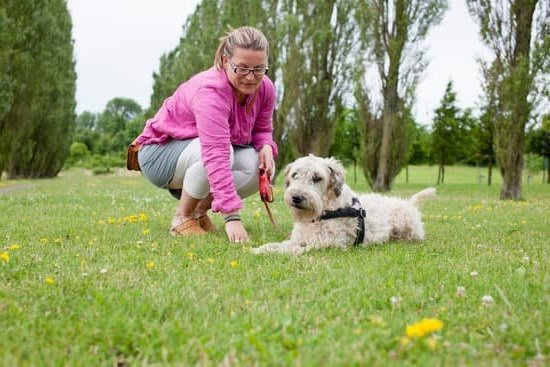The power of specially trained dogs in transforming the lives of individuals with disabilities is truly incredible. These amazing animals provide immense benefits and life-changing experiences for those in need. Whether it’s enhancing mobility and independence, guiding the visually impaired, alerting the deaf and hard of hearing, supporting those with mental health conditions, or detecting medical emergencies, trained assistance dogs play a vital role in improving the quality of life for disabled individuals.
Trained dogs can assist individuals with a wide array of disabilities, including physical, sensory, psychiatric, and medical conditions. From retrieving items to opening doors and providing balance support, service dogs enhance mobility and independence for those with limited physical abilities. Guide dogs navigate and assist individuals with visual impairments or blindness in various everyday situations, forging an incredible bond and trust between dog and handler.
Hearing dogs are trained to alert individuals to important sounds such as alarms or doorbells while offering constant companionship and security. Psychiatric service dogs provide invaluable support to individuals with mental health conditions such as anxiety disorders or PTSD by performing tasks like comforting during panic attacks or interrupting harmful behaviors. Additionally, medical alert dogs are trained to detect various medical conditions such as seizures or allergic reactions, often saving lives in the process.
The process of training these ordinary dogs into highly skilled service animals is both intensive and specialized. Dedicated trainers select suitable candidates for training programs that shape these dogs into invaluable companions for individuals with disabilities. It is crucial to recognize the legal rights and responsibilities of service dog handlers regarding access in public spaces and housing.
Understanding the Different Types of Disabilities that Can Benefit from Trained Dogs
Trained assistance dogs have the remarkable ability to transform the lives of individuals with disabilities. These highly skilled canines offer immense benefits and life-changing experiences to people with various types of disabilities. The impact they have is truly incredible, as they provide invaluable support and companionship to those in need.
There is a wide array of disabilities that can benefit from assistance dogs. Physical disabilities, such as mobility impairments or limited physical abilities, can be greatly enhanced by these trained animals. For wheelchair users or individuals who struggle with mobility, service dogs are trained to perform specific tasks such as retrieving items, opening doors, or providing balance support. These tasks not only enhance independence but also improve overall quality of life.
In addition to physical disabilities, sensory disabilities can also be supported by trained dogs. Guide dogs play a vital role in assisting individuals who are visually impaired or blind. These extraordinary animals navigate their surroundings and help their handlers go about their daily lives with confidence and ease. The bond and trust between a guide dog and its handler is truly remarkable and often leads to life-changing experiences for both parties involved.
Psychiatric service dogs offer invaluable support to individuals with mental health conditions such as anxiety disorders, PTSD, or autism. These specially trained dogs are capable of performing specific tasks such as providing comfort during panic attacks or interrupting harmful behaviors. The emotional support provided by these canine companions is immeasurable.
Furthermore, hearing dogs have been trained to alert individuals who are deaf or hard of hearing to important sounds such as alarms, doorbells, or someone calling their name. Beyond their alert capabilities, hearing dogs also provide constant companionship and security for their handlers.
The transformative powers of assistance dogs extend even further to individuals with medical conditions. Medical alert dogs are trained to detect various medical conditions including seizures, diabetes, or allergic reactions. Their timely alerts serve not only as lifesaving interventions but also provide invaluable peace of mind for individuals with chronic health conditions.
The Role of Service Dogs in Enhancing Mobility and Independence
Service dogs play a crucial role in enhancing mobility and independence for individuals with disabilities. For those with mobility impairments, such as wheelchair users or individuals with limited physical abilities, service dogs provide invaluable assistance in performing various tasks. These highly trained dogs are capable of retrieving items, opening doors, providing balance support, and even pulling wheelchairs.
One of the ways service dogs enhance mobility is by retrieving items for their handlers. Whether it’s picking up keys, a dropped phone, or a wallet, these skilled canines lend a helping paw when their handler is unable to reach or bend down. This not only saves time and effort but also significantly boosts the independence of individuals with mobility limitations.
In addition to retrieving objects, service dogs also assist in opening doors. They are trained to respond to commands such as “push” or “pull” to operate door handles or push buttons for automatic doors. This enables individuals with limited physical abilities to enter buildings independently without relying on assistance from others.
Moreover, service dogs can provide balance support for those who have difficulty maintaining stability while walking. By wearing specially designed harnesses, these dogs are able to lend stability and prevent falls by remaining steady and providing counterbalance when their handler experiences unsteadiness or loss of balance.
Overall, the role of service dogs in enhancing mobility and independence is transformative. Through their trained skills and unwavering loyalty, these incredible animals empower individuals with disabilities to navigate the world more freely and confidently.
Unleashing the Powers of Guide Dogs for the Visually Impaired
Guide Dogs: Enhancing Independence and Mobility
Guide dogs play a crucial role in empowering individuals with visual impairments or blindness to navigate the world with confidence and independence. These specially trained dogs provide invaluable support, guiding their handlers through various everyday situations and helping them overcome obstacles that may otherwise seem insurmountable. Through a strong bond of trust and companionship, guide dogs open up a whole new world of possibilities for visually impaired individuals.
Navigation and Assistance in Everyday Situations
Guide dogs undergo extensive training to become experts in navigation, ensuring their handlers can move safely and confidently in different environments. These incredible canines are skilled at recognizing potential hazards such as steps, curbs, or obstacles, allowing their handlers to avoid accidents or injuries. Additionally, they provide guidance through crowded spaces such as sidewalks or busy streets.
In real-life situations, guide dogs assist their handlers by stopping at curbs or stairs to make them aware of changes in elevation. They also help locate landmarks, such as doors or bus stops, giving their handlers a point of reference. Furthermore, these amazing dogs can find specific locations upon command, like familiar buildings or specific rooms within a building.
The Unbreakable Bond between Guide Dog and Handler
The relationship between a guide dog and its handler is truly remarkable. This partnership is built on mutual trust and understanding developed through extensive training and shared experiences. Handlers rely on their guide dogs not only for physical support but also for emotional companionship.
Real-life success stories highlight the incredible bond formed between guide dogs and their handlers. Countless visually impaired individuals have described how having a guide dog has transformed their lives by instilling confidence, providing emotional support during challenging times, and increasing their overall quality of life. The deep connection between guide dog and handler creates a unique dynamic that cannot be replicated by any other form of assistance.
The Vital Support Offered by Hearing Dogs for the Deaf and Hard of Hearing
Hearing loss can have a significant impact on a person’s daily life, making simple tasks and interactions more challenging. This is where hearing dogs for the deaf and hard of hearing come in. These specially trained canines provide vital support by alerting individuals to important sounds, enhancing their safety and independence, and offering emotional companionship.
Hearing dogs are trained to recognize and respond to specific environmental sounds that may be difficult for people with hearing loss to hear or detect on their own. They learn to alert their handlers to sounds such as doorbells, smoke alarms, telephones, or someone calling their name. When a sound occurs, the hearing dog will physically nudge their handler or lead them towards the source of the sound.
The constant companionship of these specially trained dogs can also have profound emotional and social benefits for individuals with hearing loss. Many people who are deaf or hard of hearing experience feelings of isolation or anxiety in social situations due to communication barriers. However, having a hearing dog by their side can help alleviate these challenges. These dogs provide comfort and emotional support, boosting confidence and promoting social interaction.
To illustrate the impact of hearing dogs on individuals with hearing loss, consider the story of Sarah, a young woman who lost her hearing after an accident. Prior to receiving her hearing dog named Bella, Sarah felt isolated and struggled with adapting to her new reality. Bella not only alerted Sarah to important sounds but also provided unwavering companionship. With Bella by her side, Sarah regained her sense of independence and was able to navigate various environments with greater ease.
Overall, the assistance provided by hearing dogs is invaluable for individuals with hearing loss. These remarkable canines enhance safety, independence, and emotional well-being while serving as dependable companions in daily life activities. The incredible bond formed between these dogs and their handlers truly demonstrates the transformative power of trained assistance animals.
| Benefits | Examples |
|---|---|
| Enhanced safety and independence | Hearing dogs alert their handlers to important sounds such as doorbells, smoke alarms, or someone calling their name. |
| Emotional companionship and support | Hearing dogs provide comfort and emotional well-being for individuals with hearing loss, helping them feel less isolated and anxious in social situations. |
The Remarkable Assistance Provided by Psychiatric Service Dogs
Psychiatric Service Dogs (PSDs) provide invaluable support and assistance to individuals with mental health conditions, such as anxiety disorders, post-traumatic stress disorder (PTSD), or autism. These highly trained dogs are specifically matched with their handlers based on their individual needs and are capable of performing a variety of tasks to help mitigate the symptoms of mental health conditions and provide comfort in times of distress.
One of the primary roles of PSDs is to provide emotional support and comfort during panic attacks or episodes of severe anxiety. These dogs are trained to recognize signs of distress in their handlers and respond accordingly by providing deep pressure therapy, a technique that involves applying gentle, firm pressure against the handler’s body to alleviate anxiety and induce calmness.
Additionally, PSDs can learn specific behaviors known as grounding techniques, such as licking the handler’s face or nudging their leg, to distract them from intrusive thoughts or flashbacks associated with PTSD.
Another important task that psychiatric service dogs can perform is interrupting harmful behaviors. For individuals with conditions such as self-harm tendencies or repetitive actions caused by obsessive-compulsive disorder (OCD), these dogs are trained to swiftly intervene by nudging or pawing at their handlers’ hands or bodies. By doing so, they redirect the person’s focus away from the harmful behavior towards more positive activities or engage them in alternative comforting behaviors.
In addition to these specific tasks, psychiatric service dogs also offer constant companionship and a sense of security for individuals with mental health conditions. The presence of a well-trained dog can significantly decrease feelings of loneliness, isolation, and depression in people struggling with mental health challenges. The bond between a handler and their PSD often becomes an essential source of comfort during difficult times.
Overall, the remarkable assistance provided by psychiatric service dogs cannot be overstated. They have proven themselves to be essential partners for individuals with mental health conditions by providing emotional support during times of distress, interrupting harmful behaviors, and offering constant companionship. The transformative impact that these dogs have on the lives of their handlers is immeasurable, as they provide comfort, stability, and independence for those living with mental health challenges.
Addressing the Specialized Needs of Medical Alert Dogs
Medical Alert Dogs are a unique and highly valuable type of trained assistance dog that is specifically trained to detect various medical conditions, providing vital support to individuals with chronic health conditions. These incredible dogs have the ability to sense changes in their handler’s body odor or behavior, allowing them to alert their handler or others to an impending medical issue.
Medical alert dogs are trained to detect conditions such as seizures, diabetes, allergies, and even certain types of cancer.
One remarkable example of the capabilities of medical alert dogs is their ability to detect changes in blood sugar levels in individuals with diabetes. These dogs are trained to recognize the scent of low or high blood sugar levels and can signal their handlers by nudging them, pawing at them, or barking. This early warning enables individuals with diabetes to take necessary precautions or administer medication before a potentially dangerous situation occurs.
Another invaluable role of medical alert dogs is their ability to detect seizures. These dogs are highly attuned to subtle changes in their handler’s behavior or scent that may indicate an oncoming seizure. Once they detect these signs, they can provide crucial support by activating an emergency response system or alerting nearby individuals who can offer assistance.
The impact that medical alert dogs have on the lives of individuals with chronic health conditions cannot be overstated. Not only do these specially trained canines provide a sense of security and peace of mind for their handlers, but they also save lives. There have been numerous documented cases where medical alert dogs have intervened during a potentially life-threatening situation, preventing harm and ensuring timely medical attention.
The Process and Training Involved in Transforming Dogs into Lifesaving Assistants
Transforming ordinary dogs into highly skilled service animals requires an intensive training process and a dedicated team of trainers. The journey to becoming a lifesaving assistant begins with careful selection, followed by rigorous training programs tailored to the individual needs of each disability. This section will delve into the various stages involved in the transformation of dogs into invaluable companions for individuals with disabilities.
One crucial aspect of turning dogs into assistance animals is the selection process. Dogs must possess certain temperaments, characteristics, and physical traits that are suitable for their intended roles. They must be social, obedient, intelligent, and have a strong desire to please. Additionally, they need to demonstrate resilience and adaptability to handle different environments and situations.
Once selected, these dogs undergo specialized training programs that focus on providing them with the skills necessary to assist individuals with disabilities. The duration of training can vary depending on factors such as the type of disability being addressed and the specific tasks the dog will perform. Training typically includes obedience exercises, task-oriented skills, public access manners, and socialization.
During this intensive training period, trainers employ positive reinforcement techniques to shape desired behaviors and discourage unwanted ones. They use rewards such as treats or praise to reinforce good behavior while ignoring or redirecting undesired actions. Through repetitive and consistent training sessions, dogs learn to perform specific tasks that cater to the unique needs of their handlers.
| Training Stage | Duration |
|---|---|
| Puppy Socialization | 8-12 weeks |
| Household Training | 3-6 months |
| Specialized Assistance Training | 6-12 months |
| Public Access Training | 2-9 months |
It is important to note that the training does not stop even after a dog is placed with their handler. Follow-up and continued support are crucial to ensure that the dog and handler maintain a successful partnership. Trainers often provide ongoing guidance and assistance to address any issues or challenges that may arise.
The Legal Rights and Responsibilities of Service Dog Handlers
Legal Rights of Service Dog Handlers
Service dog handlers have legal rights that are protected under the law to ensure equal access and accommodation. These legal rights vary depending on the country or region, but they generally grant service dog handlers the right to bring their assistance dogs into public spaces and housing where pets might not typically be allowed.
In the United States, for example, service dogs are protected under the Americans with Disabilities Act (ADA), which prohibits discrimination against individuals with disabilities in various areas of public life.
Under the ADA, a service dog is defined as a dog that has been individually trained to perform tasks or work for an individual with a disability. The tasks performed by the service dog must be directly related to the person’s disability, such as guiding a blind individual or alerting someone with epilepsy of an impending seizure.
It is important to note that emotional support animals or therapy animals, which provide comfort but are not trained to perform specific tasks, do not have the same legal protections as service dogs.
Responsibilities of Service Dog Handlers
While service dog handlers have legal rights, they also have important responsibilities when it comes to properly caring for and managing their assistance dogs. One of the primary responsibilities is ensuring that their service dogs are well-behaved and under control at all times in public spaces. This includes training them to respond appropriately to various situations and commands.
Service dog handlers are also responsible for maintaining the health and well-being of their assistance dogs. This involves providing regular veterinary care, proper nutrition, exercise, grooming, and attention to any specific needs their dogs may have due to their disability or condition.
Additionally, it is crucial for service dog handlers to adhere to etiquette guidelines when interacting with others in public spaces. This includes respecting others’ personal space and privacy while advocating for their rights as a handler. Educating others about service dogs can also be beneficial in fostering understanding and acceptance.
Addressing Violations and Advocating for Rights
Unfortunately, service dog handlers may encounter instances where their rights are violated or they face barriers to access due to misconceptions or ignorance about the role of service dogs. In such cases, it is important for handlers to be aware of their rights and properly address violations.
When faced with discrimination or denial of access, service dog handlers can advocate for their rights by educating businesses or individuals about the laws that protect their access rights. It may also be helpful to carry documentation, such as a certification card or letter from a healthcare professional, confirming the individual’s need for a service dog.
If an issue cannot be resolved through education or discussion, handlers have the option to contact local disability advocacy organizations or legal resources to ensure their rights are upheld and protected. By taking proactive steps and standing up for their rights, service dog handlers contribute to creating equal opportunities and access for individuals with disabilities.
Conclusion
In conclusion, the partnership between trained dogs and disabled individuals is truly life-altering. Throughout this article, we have explored the incredible impact that these specially trained assistance dogs can have on the lives of individuals with disabilities. From enhancing mobility and independence to providing vital support for those with sensory impairments or mental health conditions, these dogs transform the daily experiences and overall well-being of their handlers.
The stories shared throughout this article have highlighted just how diverse the types of disabilities are that can benefit from trained dogs. Whether it is a physical, sensory, psychiatric, or medical disability, these amazing animals are able to provide tailored support and assist with specific tasks that help their handlers navigate the world more easily. The bond and trust between a disabled individual and their trained dog is remarkable, creating a true partnership that allows for newfound freedom and independence.
Furthermore, it is important to recognize the organizations and trainers that dedicate themselves to shaping these dogs into highly skilled service animals. The intensive training programs and selection processes involved in transforming ordinary dogs into lifesaving assistants require dedication and expertise. Their commitment plays an essential role in matching each dog with the right individual and ensuring that both receive the necessary support and care.
Frequently Asked Questions
How do dogs help people with disabilities?
Dogs can provide significant assistance to people with disabilities in various ways. For individuals with mobility impairments, service dogs can be trained to retrieve objects, open doors, or even assist with dressing and undressing. These tasks can greatly enhance a person’s independence and eliminate the need for constant assistance or reliance on others.
Additionally, service dogs can help individuals with visual impairments navigate their surroundings safely by directing them around obstacles and indicating when it is safe to cross streets. Dogs also play a crucial role in providing emotional support and companionship, which can have a positive impact on mental well-being for those with disabilities.
How could a trained dog’s help make independent living possible for a disabled person?
Trained dogs have the potential to make independent living possible for disabled individuals by assisting them in performing daily tasks that would otherwise be challenging or impossible to accomplish alone. One example is a dog that has been trained to respond to medical emergencies, such as alerting their owner when their blood sugar levels get dangerously low or high. With this vital information, the person can take appropriate action promptly instead of relying on someone else to notice the symptoms.
Furthermore, service dogs can help individuals who have difficulty balancing or walking independently by providing stability and support through specialized equipment like harnesses or braces attached to the dog. This allows the disabled person to move around more confidently and without continuous physical assistance.
What is specially trained dog that performs tasks to assist her with her disability?
A specially trained dog that performs specific tasks to assist an individual with her disability is often referred to as a service dog or an assistance dog. These dogs undergo extensive training tailored to address the particular needs of their owner’s disability. For instance, a person with epilepsy may have a seizure-response dog that is trained to alert others when they are having a seizure and provide comfort until medical help arrives.
Similarly, someone with autism may benefit from having a specially trained autism assistance dog that helps them navigate social situations and manage anxiety. Other types of service dogs include guide dogs for individuals who are blind or visually impaired and hearing dogs that alert deaf individuals to sounds like doorbells or alarms. The specific tasks these dogs are trained to perform depend on the nature of the person’s disability and their unique requirements.

Welcome to the blog! I am a professional dog trainer and have been working with dogs for many years. In this blog, I will be discussing various topics related to dog training, including tips, tricks, and advice. I hope you find this information helpful and informative. Thanks for reading!





